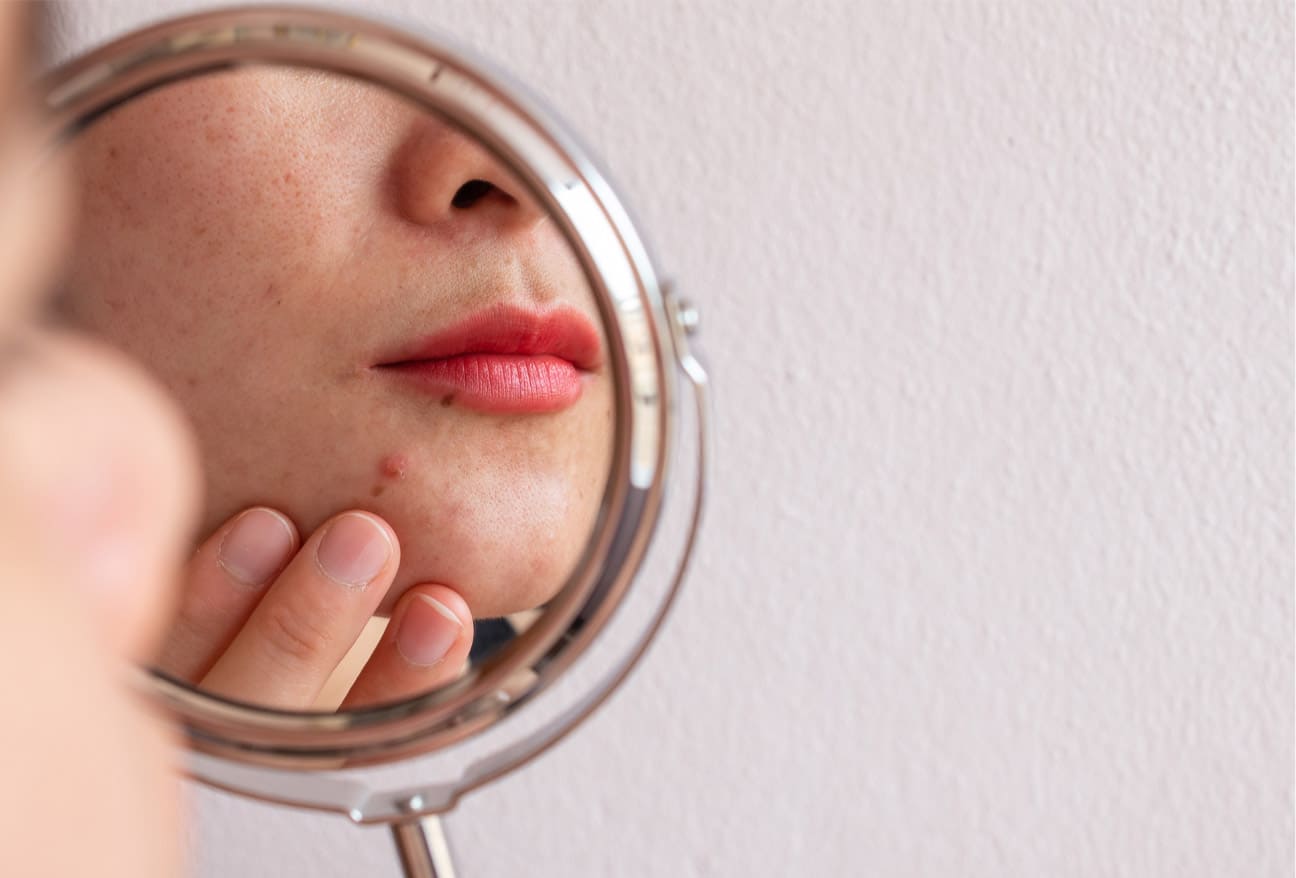-
 mederma@winmedicare.com
mederma@winmedicare.com
- No.1 Dermatologist Recommended Scar Brand
-
 Login
Login

Pimple, zits and acne are terms often used interchangeably whenever there’s an unwanted red bump anywhere on the skin. If you also are dealing with pimples or acne, the first step is to identify the difference between a pimple and acne. It is essential to use different methods of treatment for both pimples and acne as they differ from each other.
What is a Pimple?
A pimple, also known as a zit or spot, is a type of comedo and one of the many results of excess oil getting trapped in the pores. Pimples are primarily associated with the onset of puberty when the body begins to produce more oil due to hormonal changes. They can occur on the face, neck, back, shoulders, and chest.
Formation of Pimples
Pimples form due to a combination of factors that disrupt the normal functioning of the skin’s pores. Here are some reasons that lead to the formation of pimples.
Types of Pimples
What is Acne?
Acne, also known as acne vulgaris, is a skin condition that manifests when the hair follicles underneath the skin become clogged. It usually occurs where there is a high density of sweat glands. Acne is a chronic skin disease characterised by the presence of comedones (blackheads and whiteheads), papules, pustules, nodules, and cysts.
It is most commonly found on the face, neck, shoulders, back, and chest. Acne occurs when hair follicles become clogged with oil (sebum) and dead skin cells, often leading to inflammation and the proliferation of bacteria. Acne is a long-term skin condition that can persist for several months or years. It is typically severe and widespread and can have significant psychological and social impacts due to its chronic nature and potential for scarring.
Pimple vs Acne
Acne vs Pimple is a very common topic of debate for people who confuse the two. If you are wondering what the difference between acne and pimples is, let us break it down for you.
| Acne | Pimples |
| It is a chronic skin condition which takes place when the hair follicles get clogged and have extreme sebum production. | Pimples are types of skin lesions or inflammation of the skin. |
| It is a result of increased simulation of androgens. | They usually pop up due to a specific blockage in that specific area. |
| It can be caused by familial or genetic factors. | It is not always genetic. |
When to See a Dermatologist
If you have been dealing with persistent acne, it may be time to go see a dermatologist. Acne can be more than just a cosmetic concern, it can also lead to emotional distress and permanent scarring if not properly treated. If you are looking for a solution for scarring, you should try Mederma PM scar treatment cream for acne. It is clinically proven to reduce acne scars in as little as 14 nights.
Seeing a dermatologist is advisable if your acne persists for several months despite using over-the-counter treatments. They can help identify the underlying causes and develop a more effective treatment plan. Professional care can provide effective treatment options and support to help you achieve clearer, healthier skin.